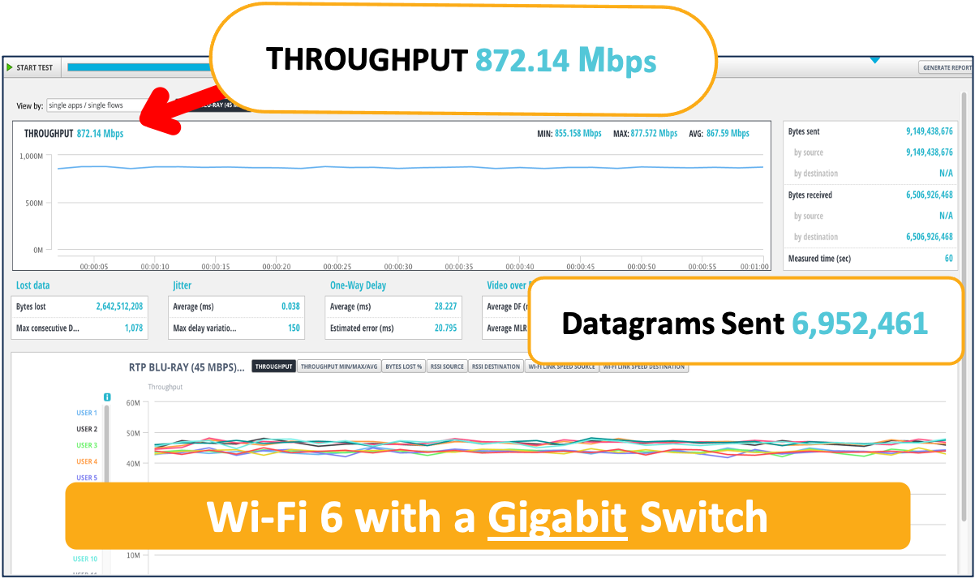It’s a typical day, and as you’re mindlessly scrolling through your phone again, *ding*, a notification reads, “Flying cars will be available for purchase in just one year!”.
Wow, that’s exciting!
But would you be surprised?
The fact is, technology is advancing so fast that before we can adjust to the current innovation, a better version is already available. Just look at where we were with virtual reality, self-driving cars, and IoT smart homes only a few years back. The point is, our expectation for what is possible has never been higher, and as a technology fanatic, life is good!
But while we’re busy geeking out, let’s not forget that all this upcoming innovation requires an equally powerful network infrastructure to support it. For example, let’s look at 8K VR gaming, a technology that’s right around the corner and will require a minimum of 1 Gbps for gameplay and above 2 Gbps for an optimal experience. With a growing thirst for technology to provide a more HD, a more next-gen, and a more seamless experience, we can expect that the required data consumption will skyrocket as well.
The question is no longer whether innovation is coming but if your network can handle it.
Next Level Wireless Speeds with Multigigabit Switching
Wi-Fi 6, with all its glory, has been the star of the networking show since the launch of Cisco’s Catalyst wireless access point (AP) product line. From our flagship Catalyst 9130 Access Point boasting a ridiculous max PHY of 5.37 Gbps down to the small Catalyst 9105, they’re truly the gold standard of enterprise wireless.
But what if I told you there is a way to further enhance their already incredible prowess?
By simply combining Cisco Catalyst APs with Catalyst Multigigabit Switching, we can witness what can only be described as network performance at its finest. A bold statement, but I can prove it by showing you the throughput numbers tested within Cisco’s wireless lab using a Catalyst 9130 Wi-Fi 6 AP on software version 17.5.1 and a Catalyst 9300 multigigabit switch.
Numbers Speak for Themselves
But first, let’s take a step back; if we connect a Catalyst 9130 AP to a gigabit switch, the 5.38 Gbps max PHY is actually significantly bottlenecked as the throughput capabilities become limited from the wired side. With this topology, we achieved an average throughput of just below 1 Gbps using the IxChariot performance testing tool.

Don’t get me wrong; these data rates are fast; it’s just that it could be so much faster!
To properly enjoy the true power of Wi-Fi 6, we connected the same Catalyst 9130 AP to a ten-gigabit port of a multigigabit switch and were able to achieve over 2 Gbps consistently.

With the main differing factor being the multigigabit switch, we were able to over double the throughput! With these blazing fast throughput numbers combined with Wi-Fi 6’s OFDMA and MU-MIMO, you’ve got yourself a wireless powerhouse that’s unmatched by any other vendor in the world and is ready for whatever the future throws at it.
The question remains, next-gen wireless is here with Wi-Fi 6, but is your infrastructure ready to maximize its potential with multigigabit switches?
Learn more about Cisco’s Catalyst 9100 Access Points
Learn more about Cisco’s Multi-Gigabit Switching
Watch our latest video about how you can Experience the Fastest Wireless Network!
Check out our Cisco Networking video channel
Subscribe to the Cisco Networking blog


The issue here is just the fact that no sane person does 80MHz channel bonding in the real world.
I have yet to saturate my C9130:s connected with 1G Ethernet but that might change with an AP Haninge a 3rd radio doing 6GHz. 🙂
Exactly, just wait for what’s going to be possible with the release of 6 GHz!
We are using WAVE 2 APs with 9300 MultiGig switches, excellent performance.
Now we will look forward for Wi-Fi 6 APs + MGig switches.
Absolutely Atul, it’s Enterprise Wireless at its finest!
The second image shows only 3 connected 5 GHz clients in the description, while the first image shows 15. This doesn’t match with the text “With the only differing factor being the multigigabit switch”.
How does the throughput look with a more realistic 40 MHz channel on 5 GHz?
That’s a good catch, the “main” differentiating factor is the Multigigabit switch.
80 MHz is really where this combination becomes effective and this becomes standardized once the 6 GHz band becomes widely available. Stay tuned for that!